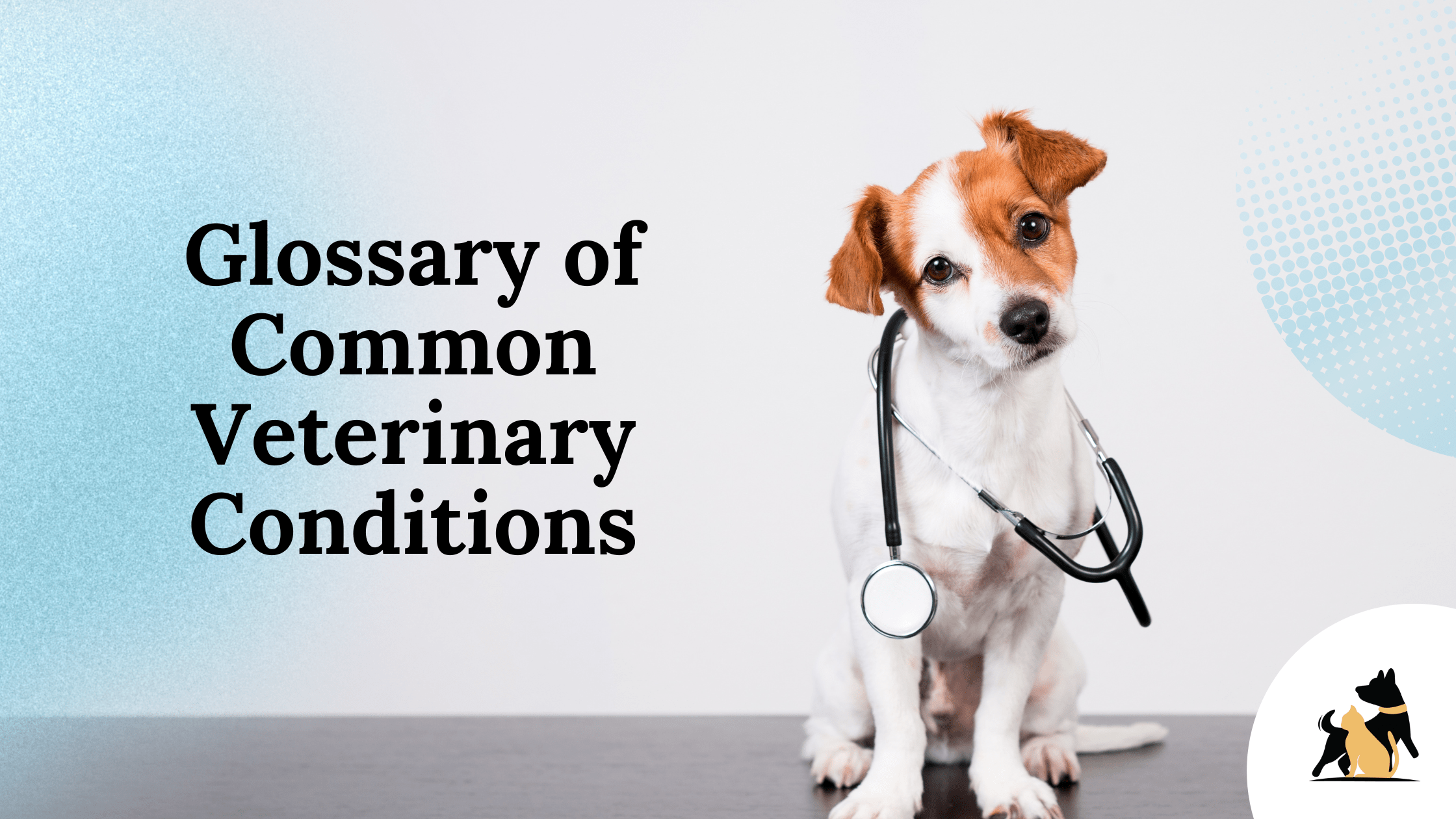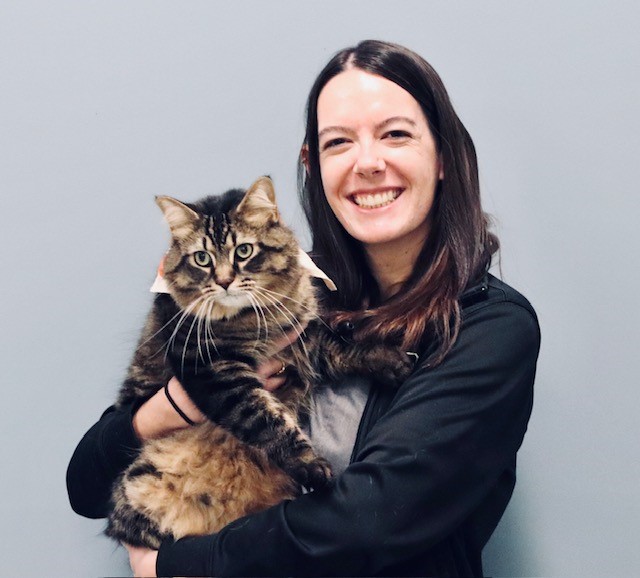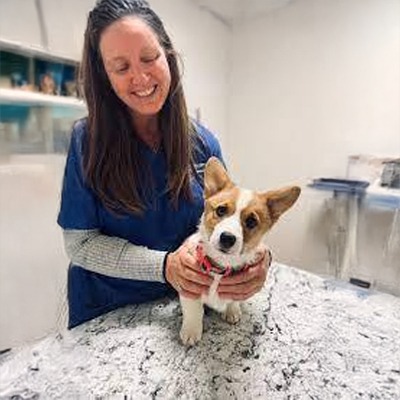Epilepsy
Epilepsy (often referred to as a seizure disorder) is a chronic neurological condition characterized by recurrent unprovoked seizures. It is commonly controlled with medication, although surgical methods are used as well. Epileptic seizures are classified both by their patterns of activity in the brain and their effects on behavior.
In terms of their pattern of activity, seizures may be described as either partial or generalized. Partial seizures only involve a localized part of the brain, whereas generalized seizures involve the entire cortex. The term’ secondary generalization’ may be used to describe a partial seizure that later spreads to the whole of the cortex and becomes generalized. All the causes of epilepsy are not known, but many predisposing factors have been identified, including brain damage resulting from malformations of brain development, head trauma, neurosurgical operations, other penetrating wounds of the brain, brain tumor, high fever, bacterial or viral encephalitis, stroke, intoxication, or acute or inborn disturbances of metabolism. Hereditary or genetic factors also play a role.
Seizures
Seizures are common in dogs, but more unusual in cats. Seizures are just symptoms that can occur with many kinds of diseases. They can happen because of diseases outside the brain or inside the brain. Low blood sugar, which can happen with an overdose of insulin or with a tumor of the pancreas, can cause seizures. They can happen with diseases of the liver or kidneys. Ingestion of toxins such as snail bait can cause seizures. Lesions of the brain, such as tumors, abscesses, granulomas, infections, or inflammatory diseases, can cause seizures. Epilepsy may cause seizures.
Seizures most commonly last for a few seconds to a couple of minutes. Grand mal seizures cause the head to go back and the legs to stiffen with rhythmic jerking. The pet is usually unconscious. Smaller partial seizures may be more difficult to recognize, but you should be suspicious of any repetitive rhythmic movements. After the seizure, the pet usually enters the post-ictal phase, where it is dazed, lethargic, and not able to walk normally. This phase may last for minutes, hours, or days. A pet may have one seizure and never have another, but most commonly, they do recur.
Testing should be done to try to determine the cause of the seizures. Blood testing, urinalysis, and liver function tests are commonly done. An MRI of the brain or a spinal tap may also be needed.
Intravenous medication can be given by a veterinarian to stop a seizure. If the seizures become too frequent, usually any more than every four to six weeks, anticonvulsant medication can be given to try to reduce future seizures. Anticonvulsant medicine does not guarantee a pet will never have another seizure, but it tends to make the seizures shorter in duration and less frequent. Phenobarbitol is the most common anticonvulsant medicine prescribed. When a dog first starts on this medicine, it will act like it is drunk for the first week or so, until it becomes accustomed to the drug. Phenobarbitol is given twice daily, and once it is started, it is usually given for the life of the pet.
Potassium bromide is the second most common anticonvulsant prescribed. It is available only at special compounding pharmacies. It is usually formulated into a liquid. It can be administered to the dog by squirting it onto a piece of bread that is fed to the dog once daily. Potassium bromide can be toxic to people; therefore, it is advised to wear gloves when handling this drug.
Vertigo or Old Dog Vestibular Syndrome
Vertigo is a syndrome in the elderly dog that can be very frightening to the owners. The dog is suddenly afflicted with a balance problem, usually staggering, but occasionally unable to stand, and more rarely actually rolling over and over. There is a tilting of the head to one side and nystagmus, a rhythmic flicking movement of the eyes. Nausea and vomiting may also be present. It is not due to a stroke, as most people assume. It is thought to be due to an abnormal flow of fluid in the semicircular canals of the inner ear. It is more common in older medium to large breeds of dogs. It is rarely seen in cats. Although the symptoms are alarming and often incapacitating to the dog, the prognosis is good. Improvement of clinical signs usually starts within 48-72 hours, and most patients are normal within two to three weeks, even with no treatment. A mild head tilt may persist. Veterinarians should be consulted as the symptoms can also be caused by ear infections, foreign bodies in the ear, or tumors. The vestibular system may need treatment, with motion sickness drugs, or intravenous fluids if the nausea is severe or the dog is unable to eat or drink for a few days.
Obesity
Excess weight is a serious health problem for dogs and cats and is common in many countries. The two main causes of obesity are too much food and too little exercise. Other contributing factors can be due to hormonal influences, certain genetic factors, and other disease processes.
If your pet is carrying extra weight, it can:
- Increase the risk of heart disease by forcing the heart to work harder.
- Increase the risk of arthritis as extra weight can stress the joints, cause joint pain, and make it harder for your pet to move around comfortably.
- Obesity can cause breathing problems, skin and hair coat problems.
- Especially in cats, obesity frequently leads to diabetes.
All of these problems can make your pet uncomfortable and limit the way they interact with you and other family members.
Treatment is to rule out and treat any medical causes, such as hypothyroidism. Reducing caloric intake and increasing exercise can help your pet successfully lose weight. Lifestyle changes and a weight loss program are essential. Your veterinarian can help determine if your pet is too heavy and provide guidelines for achieving their ideal weight. Slentrol is an oral weight loss drug that is used in some cases for obese dogs that are not able to lose weight by other means.
Cancer
Cancer, by definition, is the uncontrolled growth of cells. Any type of cell in the body can become cancerous. Once these cells grow out of control, they take over areas previously occupied by normal cells; sometimes these tumor cells break off and travel to other areas of the body. Wherever these cells lodge, they can start new tumors. This process continues until there is not enough normal tissue remaining to sustain normal bodily functions. There are a number of factors that influence how fast a cancer may grow or spread:the type of cancer cell, location, genetics, as well as any concurrent illness or debilitating condition the patient may have.
While there are many research studies devoted to determining the causes of cancer, a lot about this disease is still unknown. It is evident that factors like genetics, exposure to harmful substances, injury, and advanced age can predispose certain patients to this disease.
Regular physical examinations and thorough medical history review are often key components in detecting cancer. Samples of any abnormal tissue should be evaluated by a pathologist to determine the type of tumor and degree of aggressiveness of the disease. A pathologist’s report, along with other imaging such as X-rays, ultrasound, and lab work, helps establish the patient’s health status and determine the optimal treatment plan.
There are many different types of cancer treatment: surgery, chemotherapy, radiation, or any combination of these treatments. The important thing is to destroy the abnormal cells without damaging the normal cells. Veterinary oncologists, veterinarians who specialize in the study and treatment of cancer, can be consulted to help determine what treatment would be best for the patient.
Cancer is not always a terminal disease. Early detection and appropriate treatments are important in achieving the best outcome. New advancements in diagnostics and more effective treatments are being discovered all the time.
Hypothyroidism
Hypothyroidism is the natural deficiency of thyroid hormone and is the most common hormone imbalance in dogs. This deficiency is produced by several different mechanisms. The most common cause (at least 95% of cases) is immune destruction of the thyroid gland. It can also be caused by natural atrophy of the gland, by dietary iodine deficiency, neoplasia (primary or metastatic) of the thyroid gland or (rarely) as a congenital problem. Hypothyroidism is most common in medium to large breeds of dogs that are middle-aged (4 to 10 years), but can occur in any dog.
Hypothyroidism is extremely rare in cats and is most commonly seen in cats following bilateral thyroid removal or radioactive iodine therapy for hyperthyroidism. This is often transient and usually does not require therapy. Rarely can cats have congenital hypothyroidism.
Thyroid hormone serves as a sort of volume dial for metabolism. Since virtually every cell in the body can be affected by thyroid hormone, it is not surprising that reduced levels of thyroid hormone can lead to symptoms in multiple body systems. A recently published survey of hypothyroid dogs showed the following percentages of symptoms:
- 88% had some kind of skin abnormality
- 40% had hair loss (often on the tail or on both sides of the trunk and flanks ).
- 22% had skin infections
- 14% had dry, brittle coats with hair that could easily be pulled out
- 49% were obese
- 48% were described as lethargic or listless at home
- 36% were anemic
- 80% had an increase in blood cholesterol
Hypothyroidism is treated with the oral administration of thyroid hormone, usually given twice daily for the life of the dog. Periodic blood testing is recommended; it is important to know if the medication dose is too low or too high. Thyroid supplement is a safe medication, but if it is not given in sufficient doses, the patient will not be adequately treated. If the dose is too high, excessive water consumption, weight loss, and restlessness can result. Once a pet is started on thyroid supplementation, it is recommended to check a T4 level in two to three weeks, with the blood draw between 4 to 6 hours after the morning dose. Once the correct dose is found, it is recommended to perform a T4 every six to twelve months.
Hyperthyroidism in Cats
This is a very common disease in middle-aged to older cats. A tumor (97% are benign) on the thyroid gland starts producing too much thyroid hormone. Symptoms are usually weight loss in spite of eating well and vomiting. Other signs you might see are diarrhea, a dull and flaky hair coat, and personality changes. This disease usually can be easily diagnosed with a blood test, although occasionally we need a special test called a technesium scan to diagnose the early, borderline cases.
There are three basic methods of treatment: radioactive iodine, surgery, or an oral medication called methimazole (Tapazole). For most cats, the best treatment is radioactive iodine. In 97% of the cases, it is a one-time treatment. The biggest disadvantage is that the treatment needs to be done at a special facility, and the cat needs to be hospitalized for usually 5 to 10 days. In the past, surgery was a common treatment, but it is performed less frequently as the problem seems to recur in the other gland. Treating with Tapazole is also common, but has the disadvantage that it is lifelong, and the cat needs blood tests to monitor the thyroid level and to check for adverse effects.
The disease of hyperthyroidism can actually help the kidneys. If the cat has both kidney disease and hyperthyroidism, it is not a candidate for radioactive iodine, and the dose of Tapazole may need to be adjusted. Kidney tests are also monitored when a cat is being treated for hyperthyroidism.
Liver Shunt
A liver shunt is also known as a PSS, portosystemic shunt, portacaval shunt, or portosystemic vascular anomaly. This abnormality occurs when a pet’s venous blood from the intestine bypasses the liver. In the normal pet, blood vessels pick up nutrients from ingested material in the intestine and carry it to the liver to be processed. In the case of a shunt, an abnormal blood vessel carries this blood around the liver and dumps the nutrients directly into the general circulation. Toxins build up in the bloodstream as a result. The pet can be born with the shunt (congenital) or can develop it later (acquired).
Breeds at increased risk for congenital shunts include Cairn Terriers, Yorkshire Terriers, Maltese, Irish Wolfhounds, Himalayans, and Persians. An acquired shunt can develop in any breed and is usually caused by liver problems due to toxins, hepatitis, infections, inflammation, etc.
Symptoms of a liver shunt include stunted growth, weight loss, vomiting, diarrhea, lethargy, unresponsiveness, seizures, disorientation, poor skin and coat, excessive drinking, and urination. Some pets will have a single sig,n and some will have several.
The diagnosis is made with blood tests, urinalysis, and imaging tests (radiographs and/or ultrasounds). A liver function test called bile acids is usually very suggestive of a liver shunt when the values are very high. Another diagnostic test that can be performed is nuclear scintigraphy, which must be done at a referral specialty facility. Yet another possible diagnostic test that can be performed is a CT scan.
The treatment and how well the pet responds are dependent on many things including the location and severity of the shunt. Some pets will do well for long periods of time with medical management only. Medical management includes a low protein diet, antibiotics and lactulose. Surgical repair is commonly done for congenital shunts and again the success is dependent on the location and severity of the shunt.
Diabetes Mellitus
Diabetes Mellitus (DM) is a life long disorder of dogs and cats that results when the pancreas fails to produce enough insulin to meet the animal’s needs. Insulin is a hormone needed to transport glucose (blood sugar) into the body’s cells. When there is a lack of insulin in the body, blood glucose rises to abnormally high levels. Over time, this causes damage to body tissues and produces the symptoms commonly seen in animals with DM.
Early symptoms, such as weakness, weight loss, change in appetite and depression can be mild and may go unnoticed by the owner. Increased thirst and frequent urination more commonly results in a visit to your Veterinarian where tests can be done to identify what may be affecting the family pet. Urinary tract infections are more common in diabetic pets than in normal animals.
Once a diagnosis has been made, a treatment plan will be designed to meet the individual needs of your pet and you. The plan will address the type and amount of insulin, how it is to be administered, dietary restrictions and exercise for your pet. Dogs are Type I diabetics in that they require insulin injections. Cats are usually Type II diabetics. Insulin injections are usually used initially, but when fed a special diet, as much as 70% of cats can eventually be maintained without the insulin.
There is no cure for DM, but through your commitment of time and management of their life style, your pet can lead a happy comfortable life.
Digestive and Oral Health
Feline Stomatitis
Cats rarely display their pain, but cats with feline stomatitis are often the exception. If your cat appears to have mouth pain, is reluctant to eat, doesn’t want to groom, is drooling, and doesn’t want you to open its mouth, it may be suffering from this debilitating, degenerative oral condition, and prompt treatment is a must.
Stomatitis refers to an inflammation of the oral mucosa, the mucous membranes that line a cat’s mouth. This layer of cells can become inflamed for a variety of reasons. The more frequent causes of inflammation are gingivitis and periodontal disease. In the case of stomatitis, the exact cause isn’t known, but it is suspected to be an immune-mediated disease. Depending on the extent of lesions, this condition is also called faucitis and caudal mucositis, if the areas in the back of the mouth behind the teeth are affected. Stomatitis affects all breeds of cats, and can occur in any age.
Treatment for oral inflammation depends on the severity of the disease. Milder cases can be treated by having a dental prophylaxis under anesthesia. Once the teeth are cleaned, you may be asked to apply a chlorhexidene gel to help keep the bacteria under control. Taking dental X-rays is important in all these cases as a degeneration of the tooth termed resorption, may occur in the crown or root of the tooth. This resorption can cause pain and inflammation.
More advanced cases of feline stomatitis generally call for extraction of all or a majority of the affected teeth. While this approach might sound extreme, it can also be highly effective at curing the stomatitis altogether, instead of merely keeping it in check. If extractions of the molars and pre-molars doesn’t resolve the problem, further extractions of the canines and incisors very well might. Some cat owners decide to spare their cats a possible future surgery by having these teeth removed with the others. X-rays of the teeth during extraction are critical because any piece of a tooth is left behind, the inflammation will persist.
Your cat’s stomatitis may also involve the bone surrounding the teeth, leading to a condition called osteomyelitis. This is a serious infection of the bone surrounding the teeth which is treated by removing the diseased bone and then allowing healthy tissue to regenerate in its place.
Sources:
Deforge, D. H., VMD, “One Clinician’s Experience With A New Treatment For Feline Stomatitis,” Veterinary Practice News
Kirby, Naomi, DVM, MS, “Managing Feline Stomatitis,” IVC Journal.
Lews, John, VMD, FAVD, DIPL. AVDC., “Why Teeth Removal is Best When Your Patient Has Feline Stomatitis,” Veterinary Practice News.
Merck Veterinary Manuals, “Oral Inflammatory and Ulcerative Disease in Small Animals.”
Dentistry
Over 85% of dogs and cats have some type of periodontal disease. Periodontal disease simply means that the gums and bone that hold the teeth in place are being destroyed by oral bacteria. This preventable disease is the number one diagnosed disease in our pets, yet many animals suffer needlessly. Periodontal disease begins with gingivitis, or inflammation of the gum tissue, which is caused by plaque. Plaque is a mixture of saliva, bacteria, glycoproteins and sugars that adhere to the tooth surface.
Within minutes after a cleaning, a thin layer of plaque has adhered to the teeth. Eventually this hardens to become calculus or tartar. Calculus by itself is nonpathogenic – it does not cause disease. However, it does create a rough surface for more plaque to adhere to, and pushes the gums away from the teeth, which increases surface area for more plaque to adhere. Eventually, the supporting structures of the tooth (bone, tissue, periodontal ligament) are destroyed and the tooth becomes mobile and will either fall out on its own or need to be extracted. Signs of periodontal disease are bad breath (halitosis), reluctancy to eat, chewing on one side of the mouth, dropping food, pawing at the face or rubbing the face on the floor, drooling, becoming head shy, and painful mouth/face.
Veterinarians recommend the following care for pets:
STEP 1: Bring your pet in for a dental exam. Don’t wait for his annual checkup if you suspect a problem.
STEP 2: Begin a dental care regimen at home. Brushing your pet’s teeth daily is very important. We also recommend using a specially formulated dental rinse, and dental chews and food. Please ask us if you need instructions on brushing your pet’s teeth, or if you have any other questions.
STEP 3: Schedule your pets for an annual teeth cleaning with x-rays. This is also very important and ensures we are catching any disease early enough to treat.
Periodontal disease and oral bacteria can easily affect other organ systems including the heart, liver, kidneys, lungs and brain. Make sure you bring your pet into the office for regular vet cleanings. Contact us if it’s time for your pet’s next cleaning.
Bloat and Gastric Torsion
Bloat and gastric torsion is a serious condition and your pet should be rushed to the emergency room if this occurs. Certain breeds of dogs with deep chests and narrow waists, such as hounds, bouvier des Flandres, or doberman pinschers are more susceptible to a syndrome of gastric torsion and bloat.
This occurs when the stomach twists on its supporting ligaments and the contents begin to release gas pressure. A similar disease is seen in cattle and horses as well. Dogs who experience such an attack are very susceptible to another which is usually more severe, and this is one case where immediate veterinary care is needed, normally requiring abdominal surgery to prevent a recurrence.
Gastric Dilation Volvulus (GDV)
Gastric Dilation Volvulus (GDV) is a life threatening, acute condition that requires immediate medical attention. Certain breeds are more prone to this condition: Boxers, Great Danes, Standard Poodles, Saint Bernards, Irish Setters, Dobermans, Weimaraners and Gordon Setters. These breeds are considered deep-chested (large chest and narrow waist) but any similarly shaped dog can be at risk.
Diagnosis of GDV is made based on physical examination, history and abdominal x-rays. Often GDV happens when a pet eats a large meal and then becomes very active. Initially the dog may become restless, try to vomit or retch continuously but is unable to produce any vomit. This is because the stomach has twisted, preventing anything entering and exiting the digestive system. The pressure inside the stomach starts to increase and the dog may salivate and pant excessively. As the patient’s condition progresses they become lethargic, have a swollen stomach and eventually collapse. If not treated, the internal organs can be damaged and without timely treatment this condition is fatal.
The goals of treatment are to reduce the pressure in the stomach and return the stomach to its normal position. During the surgery, the stomach and internal organs are examined for damage and then the stomach is attached to the body wall to prevent a reoccurrence.
Prophylactic suturing of the stomach is sometimes advised in breeds predisposed to GDV during abdominal surgeries for other causes. Other preventative measures include restriction of exercise before and after feeding. Feed twice a day instead of once a day and not to elevate food/water bowls.
Pet Health
Arthritis
The most common type of arthritis is osteoarthritis which can be due to wear and tear on joints from over use, aging, injury, or from an unstable joint such as which occurs with a ruptured ACL (anterior cruciate ligament) in the knee.
The chronic form of this disease is called degenerative joint disease (DJD). It is estimated that 20% of dogs older than one year of age have some form of DJD. One study showed that 90% of cats over 12 years of age had evidence of DJD on x-rays.
Other causes of the inflammation can be infectious. Septic arthritis is caused by a bacterial or fungal infection. Lyme disease or Ehrlichia infection can also cause arthritis. Auto-immune diseases, or what is now called immune- mediated diseases, such as Lupus can cause swollen, painful, inflamed joints. More rarely, tumors can cause arthritis.
Treatment for arthritis should be directed to the inciting cause if possible. Surgery may be needed to stabilize a joint. DJD may be treated with NSAID’s, pain medication such as Tramadol, cartilage protective agents such as glucosamine or Adequan, acupuncture, or as a last resort, steroids. NSAID’s (non-steroidal anti-inflammatory drugs) have many types. In general, it is recommended to use NSAID’s developed for pets, and not ones made for use in people as those are highly likely to cause ulcers in dogs, and most NSAID’s can’t be used in cats.
Leptospirosis
Leptospirosis is a serious, life-threatening disease caused by a spiral shaped bacteria. Dogs, cats, other animals and even people can be infected through exposure to urine, bite wounds, ingestion of infected flesh, or contact with contaminated soil, water and even bedding. Certain environmental conditions can favor the bacteria: standing water, rain, floods and warm moist weather. Pets living under these conditions, especially those who live primarily outdoors or are used for activities like hunting or herding are at a higher risk of being infected. The bacteria can quickly spread through the body causing symptoms like fever, joint pain, excessive drinking and general malaise. Eventually the bacteria settle in the kidneys or liver where it rapidly multiplies leading to organ inflammation, organ failure and possibly death.
People infected with Leptospirosis show the same symptoms as pets: fever, joint pain, excessive drinking and general malaise. Most often people contract the disease when their mucous membranes or open wounds come into contact with the urine or other bodily fluids of an infected animal.
Repeated blood tests 2 to 4 weeks apart are recommended for diagnosis. This test detects the presence of antibodies the body produces after being exposed to the disease. Recent vaccination against leptospirosis can make diagnosis difficult as vaccines stimulate the body to create similar antibodies. New technology has made rapid tests available and sometimes urine can be used although this test is less sensitive. Samples of kidney tissue can be used but this is rarely done due to the need of an invasive procedure.
Fortunately, leptospirosis can be treated with a combination of antibiotics. If kidney function becomes seriously impaired, patients may need kidney dialysis; some patients need this only temporarily while others will need it for life.
Supportive care is crucial for pets that become extremely debilitated by the disease. Intravenous fluids help maintain blood flow through the damaged organs. Special precautions should be observed when cleaning up any urine or bodily fluids from an infected patient.
Leptospirosis is a zoonzotic disease and vaccinations are available. Unfortunately the leptospirosis vaccine has been linked to a high level of vaccine reactions and while reducing the severity of a dog’s illness will not prevent them from becoming carriers of the disease. Therefore this vaccine is given only when deemed necessary after consultation with your veterinarian.
Dentistry
Over 85% of dogs and cats have some type of periodontal disease. Periodontal disease simply means that the gums and bone that hold the teeth in place are being destroyed by oral bacteria. This preventable disease is the number one diagnosed disease in our pets, yet many animals suffer needlessly. Periodontal disease begins with gingivitis, or inflammation of the gum tissue, which is caused by plaque. Plaque is a mixture of saliva, bacteria, glycoproteins and sugars that adhere to the tooth surface.
Within minutes after a cleaning, a thin layer of plaque has adhered to the teeth. Eventually this hardens to become calculus or tartar. Calculus by itself is nonpathogenic – it does not cause disease. However, it does create a rough surface for more plaque to adhere to, and pushes the gums away from the teeth, which increases surface area for more plaque to adhere. Eventually, the supporting structures of the tooth (bone, tissue, periodontal ligament) are destroyed and the tooth becomes mobile and will either fall out on its own or need to be extracted. Signs of periodontal disease are bad breath (halitosis), reluctancy to eat, chewing on one side of the mouth, dropping food, pawing at the face or rubbing the face on the floor, drooling, becoming head shy, and painful mouth/face.
Veterinarians recommend the following care for pets:
STEP 1: Bring your pet in for a dental exam. Don’t wait for his annual checkup if you suspect a problem.
STEP 2: Begin a dental care regimen at home. Brushing your pet’s teeth daily is very important. We also recommend using a specially formulated dental rinse, and dental chews and food. Please ask us if you need instructions on brushing your pet’s teeth, or if you have any other questions.
STEP 3: Schedule your pets for an annual teeth cleaning with x-rays. This is also very important and ensures we are catching any disease early enough to treat.
Periodontal disease and oral bacteria can easily affect other organ systems including the heart, liver, kidneys, lungs and brain. Make sure you bring your pet into the office for regular vet cleanings. Contact us if it’s time for your pet’s next cleaning.
Fleas
A common parasite, fleas are found in almost every area of the world and can be found on dogs, cats, and many other mammals. They survive year to year even in cold climates because they live on pets, in buildings, and on wild animals.
There are four stages to the flea life cycle. Eggs are laid by an adult female flea which is on a host. The eggs roll off into the environment and after a few days they mature into larvae. Larvae survive by eating flea feces, flea egg shells, organic debris, and other flea larvae. They can crawl and move as far as six inches per day. After a few days, and once conditions are conducive, larvae mature into pupae. Pupae have very thick shells and are very resistant to environmental conditions. After a few days, and once the pupae detect a host is present, they mature into adult fleas that hop on another host.
There are many types of flea treatments. Unfortunately, there is no one drug or chemical that can kill all four stages of the flea. There are several types of good products to kill adult fleas: Activyl, Frontline, Advantage, Comfortis, Capstar, Revolution, and others. Older products of various formulations of synthetic pyrethrins are also available, some of which are highly toxic to cats. Lufenuron and methoprene are chemicals that work on immature stages of the flea, although there is no chemical that will kill the pupal stage.
Fleas are the number one allergen of dogs and cats and can cause severe skin disease and itching. Another reason fleas should be treated is due to the fact that they can carry and spread several serious diseases, such as tapeworms, Cat scratch disease (Bartonella), murine typhus, and the bubonic plague.
Your veterinarian can help you with a flea control program depending on what kind of pets you have and the level of flea infestation. Control may involve treating the environment as well as the pets. Contact your veterinarian today for more information about the treatment options available for your pet!
Pests and Parasites
Tapeworms
Tapeworms live in the digestive tracts of vertebrates as adults and often in the bodies of various animals as juveniles. In a tapeworm infection, adults absorb food predigested by the host, so the worms have no need for a digestive tract or a mouth. Large tapeworms are made almost entirely of reproductive structures with a small “head” for attachment. Symptoms vary widely, depending on the species causing the infection. The largest tapeworms can be 20 m or longer. Tapeworm awareness is importance to humans because they infect people and livestock. Two important tapeworms are the pork tapeworm and the beef tapeworm
Roundworms
There are many types of roundworms, but some of the most common are intestinal parasites of dogs, cats, and raccoons. Puppies are frequently born with roundworms, and kittens can be infected via the mother’s milk or feces. Adult roundworms are ivory colored, four to six inches long, and round (not flat ) in shape. These parasites can cause diarrhea, vomiting, weight loss, and even coughing in these young patients. In the usual case, the owner will not see the adult roundworms passed in the stool. This is why it is important for the veterinarian to do a laboratory test to check for any parasites that might be present. We check for parasite eggs with a microscope. You should bring a fresh stool sample (one that was produced that day) to your puppy or kitten’s appointment.
It is important to know that animal roundworms can be transmitted to people, and in some cases can cause serious disease. In a recent study from the Center for Disease Control (CDC), it was reported that almost 14 % of all Americans are infected with Toxocara, the most common roundworm of pets. Although most people infected have no symptoms, the parasite is capable of causing blindness (especially in children) and other systemic illness. The infective agent is the microscopic egg in the animal’s stool. It is known that these eggs are very resistant to environmental conditions. They have been shown to live in yards, playgrounds, and fields for up to 10 years.
The most dangerous roundworm is Baylisascaris, a parasite of raccoons that has an affinity for brain tissue. Children infected with this parasite have suffered severe, permanent mental retardation. The majority of raccoons carry this parasite. If wildlife is present on your property, you should patrol the grounds and any raccoon stools should be treated as hazardous waste. Wear disposable gloves to double bag and dispose of the feces. The only thing that will kill the remaining eggs in the soil is fire.
The CDC recommends regular deworming of all puppies and kittens to try to reduce the exposure to people. A medication will be dispensed when your puppy or kitten is first seen. Another important measure is monthly parasite preventative, or what we sometimes call “heartworm preventative.” Many of these drugs are also effective for roundworms, and are an important part of a wellness program.
The CDC prevention measures include:
- Keep dogs and cats under a veterinarian’s care for early and regular deworming
- Clean up after the pet and dispose of stool
- Keep animals’ play area clean
- Wash hands after playing with dogs or cats
- Keep children from playing in areas where animals have soiled
- Cover sandboxes to keep animals out
- Don’t let children eat dirt
Parasites
There are many types of parasites that are found in the GI tract of cats and dogs. Worms such as roundworms, whipworms, and hookworms are very common in almost all parts of the world. These parasites shed their infective eggs in the pet’s stool and contaminate the environment; some eggs can live on yards or fields for years. The eggs are ingested by the pet and the life cycle is completed when the worm grow into an adult in the intestine of a new host.
Tapeworms are another very common intestinal parasite of dogs and cats. This parasite is different though, in that it requires transmission through an intermediate host, most commonly a flea. Other intermediate hosts can be mice, rats, or rabbits. The dog or cat eats the intermediate host containing the tapeworm egg, and the tapeworm completes its life cycle to develop into an adult in the intestine of the dog or cat. The intermediate host is required, if a pet eats an adult tapeworm or tapeworm segment, it will not cause tapeworms to grow in its intestine.
Other parasites can live in the intestine that are not worms such as one-celled organisms called protozoa, which are also prevalent parasites among pets. Giardia and coccidia are protozoa that can be transmitted directly from animals to your pet, or your pet can be exposed from contaminated water. Diagnosis of these parasites requires your veterinarian or their laboratory finding either the microscopic parasite or its egg in the stool.
The only parasites that can be seen in the stool with the naked eye are roundworms and tapeworms. Roundworms are ivory colored, round (not flat) in shape, and about 4 to 6 inches long. Tapeworms are ivory colored and flat in shape. The adult tapeworm is several feet long, but usually you see only tapeworm segments that look like either sesame seeds or rice. Your pet could have either of these worms without the adult parasites ever being shed into the stool. If your pet’s stool looks normal, don’t think your pet can’t be infected. There is no one drug that can kill all types of intestinal parasites that exist. Your veterinarian needs to know what kind of parasite(s) infection is involved, so a correct drug can be prescribed. Also, some of the monthly heartworm preventatives will also treat roundworms, hookworms, and whipworms.
If you suspect that your pet may be affected, don’t hesitate to contact your veterinarian today for direction on what to do! Your veterinarian will also be able to answer all your questions and help you prevent your pets from getting parasites in the first place.
Hookworm
Hookworms are small, thread-like parasites of the small intestine where they attach and suck large amounts of blood. These parasites are found in almost all parts of the world, being common in dogs, and occasionally seen in cats.
Symptoms are usually diarrhea and weight loss. The parasites can actually suck so much blood that they cause pale gums from anemia, and black and tarry stools. Young puppies can be so severely affected that they die. Infection can be by ingestion of breast milk from an infected mother, by ingestion of infected eggs, or by skin penetration of infected larvae.
Since the adult parasites are so small, they are rarely seen in the stool. Diagnosis of these parasites is by the veterinarian or laboratory finding the microscopic eggs in the stool.
There are a variety of medications that can kill hookworms. The important point to know is that there is no one medicine that will kill all the types of intestinal parasites that exist. Some of the monthly “heartworm preventatives” will also work to treat hookworms.
People exposed to hookworms can develop a rash called cutaneous larval migrans. Infected larvae, usually from contaminated yards, can penetrate human skin and cause red tracts.
Mites
There are many types of mites that infect dogs, cats, and other animals. Mites are microscopic arthropod parasites that, for the most part, infect the skin or mucous membranes. Mites can even be present on birds and reptiles. The most common mites that infect dogs and cats are ear mites, Demodex, scabies, and Cheyletiella.
Ear mites are very common on cats and are occasionally seen on dogs. They live primarily in the ear canals and can cause severe irritation. They are easily transmitted between pets, so if they are found in one pet, all pets in contact should be treated. A different species of ear mite can infect rabbits.
Demodex is a mite that all dogs are exposed to, but only a small percentage of dogs develop skin problems. In young puppies, it usually causes small areas of hair loss especially on the head and front legs. Adult dogs tend to show more generalized symptoms, and usually have more red, itchy skin lesions. Adult dogs that develop Demodex usually have another disease such as hypothyroidism, Cushings, or cancer that suppresses the immune system and allows the Demodex to increase in numbers and cause lesions. It is now recognized that cats have their own species of Demodex, but the disease is much more rare in cats.
Scabies is a skin disease in dogs or people caused by the mite Sarcoptes. Most dogs with this disease are intensely itchy. Scabies is highly contagious, but not all dogs in contact are as itchy. People also have their own species of Sarcoptes; most of their cases are due to the human scabies mite, but it is possible for people to develop lesions from the dog scabies mite.
Cheyletiella species of mites can be seen in rabbits and dogs. It is especially seen in puppies as large flakes of scale and is sometimes called “walking dandruff.” There is no one treatment that will kill all the types of mites discussed here. Your veterinarian can advise you on the various treatments for each problem.
Ticks
Ticks are the small wingless external parasites, living by hematophagy on the blood of mammals, birds, and occasionally reptiles and amphibians. Ticks are blood-sucking parasites that are often found in freshly mown grass, where they will rest themselves at the tip of a blade so as to attach themselves to a passing animal. It is a common misconception that the tick can jump from the plant onto the host. Physical contact is the only method of transportation for ticks. They will generally drop off the animal when full, but this may take several days. Ticks have a harpoon-like structure in their mouth area, known as a hypostome, that allows them to anchor themselves firmly in place while sucking blood. This mechanism is normally so strong that removal of a lodged tick requires two actions: One to remove the tick, and one to remove the remaining head section of the tick.
Ticks are important vectors of a number of diseases. Ticks are second only to mosquitoes as vectors of human disease, both infectious and toxic. Hard ticks can transmit human diseases such as relapsing fever, Lyme disease, Rocky Mountain spotted fever, tularemia, equine encephalitis, Colorado tick fever, and several forms of ehrlichiosis. Additionally, they are responsible for transmitting livestock and pet diseases, including babesiosis, anaplasmosis and cytauxzoonosis.
Orthopedics
Ruptured Anterior Cruciate Ligament (ACL)
The rupture of the cruciate ligament is the most common knee injury in the dog.
This injury has two common presentations. One is the young athletic dog playing roughly who acutely ruptures the ligament and is non-weight bearing on the affected hind leg. The second presentation is the older, overweight dog with weakened or partially torn ligaments that rupture with a slight misstep. In this patient the lameness may be acute or there may be more subtle chronic lameness related to prolonged joint instability.
Your veterinarian will perform an orthopedic exam and take radiographs (x-rays) in order to diagnose this injury. The orthopedic exam involves an analysis of the gait, examination of the joint for swelling and/or pain and the presence of “drawer movement” (the presence of forward instability of the knee joint). Sedation is often required to do an adequate evaluation of the knee, especially in large dogs. Sedation prevents the pet from tensing the muscles and temporarily stabilizing the joint and preventing the demonstration of the drawer sign. Radiographs confirm inflammatory changes in the joint and establish the level of osteoarthritic changes present.
Surgical repair is recommended in most cases to stabilize the joint and prevent further osteoarthritic changes secondary to the joint instability. There are three primary types of surgical repair: intracapsular, extracapsular, and tibial plateau leveling osteotomy (TPLO). The type of surgical repair will be determined by the size, age and activity level of the pet as well as the degree of osteoarthritis already present in the joint. The recovery time and recommendation for physical therapy will depend on the type of surgical repair performed.
Luxating Patella
Luxating patella is a condition where the kneecap (patella) moves out of its normal position. Luxating patella is one of the most common knee joint abnormalities of dogs, but it is only occasionally seen in cats. It may affect one or both of the knees. In some cases it moves (luxates) towards the inside of the knee, and in other cases it luxates towards the outside of the knee. Luxation to the inside of the knee is the most common form seen; it is most commonly seen in the small or miniature breeds of dogs such as Poodles, Maltese, Yorkies, and Chihuahuas. Luxations towards the outside of the knee are seen less frequently. It can be present in many breeds, but is seen especially in Newfoundlands.
There are four grades of patellar luxation:
- Grade I- the kneecap can be manually luxated but the kneecap returns to its normal position when the pressure is released.
- Grade II- the kneecap can spontaneously luxate out of position with just normal movement of the knee.
- Grade III- the kneecap remains luxated most of the time but can be manually reduced into the normal position.
- Grade IV- the patella is permanently luxated and can not be manually repositioned
Dogs frequently start with a Grade I or Grade II and worsen over time to a Grade III or IV. Many people are not aware their pet is affected, but a luxating patella can cause pain. Owners may see the pet limp on a rear leg, or they may see them shake a rear leg to try to snap the kneecap back into place.
A serious consequence of patellar luxation is that it predisposes the dog to a rupture of a ligament inside the knee called the anterior cruciate ligament (ACL). ACL ruptures are very painful, at least initially, and usually the dog doesn’t bear weight on the affected leg. Surgery is indicated for any case that is causing lameness or pain. Owners may also elect corrective surgery as a way to prevent an ACL.
Hip Dysplasia
Hip dysplasia is a congenital disease that, in its more severe form, can eventually cause lameness and painful arthritis of the joints. It is caused by a combination of genetic and environmental factors. It can be found in many animals and, rarely, humans, but is common in many dog breeds, particularly the larger breeds.
In the normal anatomy of the hip joint, the thigh bone (femur) joins the hip in the hip joint, specifically the caput ossis femoris. The almost spherical end of the femur articulates with the hip bone acetabulum, a partly cartilaginous mold into which the caput neatly fits. It is important that the weight of the body is carried on the bony part of the acetabulum, not on the cartilage part, because otherwise the caput can glide out of the acetabulum, which is very painful. Such a condition also may lead to maladaptation of the respective bones and poor articulation of the joint. In dogs, the problem almost always appears by the time the dog is 18 months old. The defect can be anywhere from mild to severely crippling. It can cause severe osteoarthritis eventually.
Feline Leukemia Virus
Feline leukemia (FeLV) is a virus that weakens your cat’s immune system. Unfortunately, when the immune system does not function properly, your cat may be more likely to develop other diseases, such as cancer and blood disorders.
How Cats Contract Feline Leukemia
Cats get feline leukemia from other cats. The virus is spread in saliva, urine, feces, nasal secretions and milk from nursing mothers. When an infected cat bites or grooms another cat, that cat may develop the virus. If a pregnant cat has feline leukemia, the kittens might be born with the disease or may develop it after nursing. Because kittens have weaker immune systems than older cats, they are more likely to suffer from the virus. Cats can also spread the virus by sharing food dishes or litter boxes; although this does not happen very often.
Symptoms of Feline Leukemia
There may be no symptoms of the disease during the earlier stages. In the later stages, symptoms may be similar to those that are also typical of other types of viruses. Depending on the stage of the disease, a cat infected with feline leukemia may experience:
- Fever
- Diarrhea
- Gradual weight loss
- Loss of appetite
- Lethargy
- Eye disorders
- Pale gums or inflammation of the gums
- Poor coat
- Anemia
- Skin, bladder or upper respiratory tract infections
- Seizures
- Behavioral changes
- Swollen lymph nodes
Diagnosis and Treatment
Feline leukemia is diagnosed via a blood test that detects a protein found in the virus. Unfortunately, there is no cure for the disease. Many infected cats die within two to three years of being diagnosed. Although there is no treatment for feline leukemia, symptoms can be treated to keep your cat more comfortable. If weight loss is a problem, nutritional supplements will help your cat receive the necessary nutrients. Your cat may get sick more often because of his weakened immune system, but these infections can often be treated with antibiotics.
Prevention
The FeLV vaccine will help prevent your cat from developing feline leukemia, but it does not offer an absolute guarantee that your cat will never get the virus. The best way to protect your furry friend is to keep him or her indoors. When cats roam, they are more likely to come in contact with infected cats that may transmit the virus through a bite.
Before you bring a new pet into your home, make sure that it has been tested for the feline leukemia virus. If one of your cats does develop the virus, separate it from your other cats to prevent the spread of the disease.
Has your cat had an examination and feline leukemia shot recently? If not, give us a call to schedule an appointment.


















